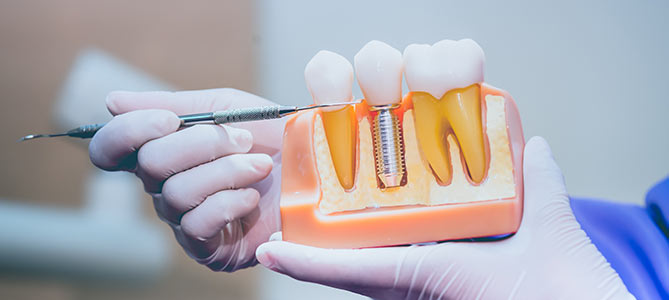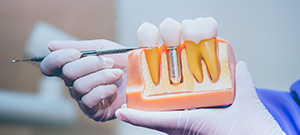Benefits of Dental Bridges Serving Bay Area, San Jose, CA
Dental bridges have many benefits, such as helping restore your smile, improving chewing, maintaining your face’s natural shape, preventing teeth from shifting, and more. Dental bridges can improve self-confidence and appearance while addressing physical issues caused by missing teeth. At Selective Dental, Dr. Victoria Vuong, DDS, and a team of experienced professionals provide comprehensive and quality dental care. Contact us today for more information or schedule an appointment online. We are conveniently located at 3151 South White Road, Suite 203 San Jose, CA 95148.


Table of Contents:
What are the different types of dental bridges?
What are the benefits of dental bridges?
Who is a good candidate for dental bridges?
What happens during a dental bridge procedure?
The most popular type of dental bridge is the traditional bridge. Whenever you have missing teeth or gaps on both sides of your mouth, these crowns are used to fill the gap. There are usually two abutment teeth on either side of the pontic tooth, which hold the pontic tooth in place. An abutment tooth is a natural tooth that receives a dental crown to support a fake tooth or a pontic tooth.
Cantilever bridges are similar to traditional bridges but are attached only to one side. Using cantilever bridges allows a bridge to be secured even when natural teeth are missing from one side of a gap. As with traditional bridges, the adjacent tooth’s enamel must be removed before the bridge can be attached.
Replacing teeth at the front of the mouth with Maryland bridges, or resin-bonded bridges, is often recommended. The pontic tooth is attached to adjacent natural teeth with the help of metal or porcelain bands. Since Maryland bridges don’t require crowns to hold them in place, they are considered more conservative than traditional bridges because adjacent teeth do not need to have their enamel removed.
An implant-supported bridge is similar to a regular dental bridge, but instead of being supported by natural teeth, it is supported by dental implants. A bridge is used when you have more than one missing tooth or if there is a greater risk that individual implants will be put under too much strain.
When you want to restore your smile after missing teeth, dental bridges are recommended. A smile that makes you feel confident increases your self-esteem, which improves your quality of life.
In addition, chewing properly and speaking are important benefits. When a patient loses one or more teeth, chewing certain foods can be challenging or uncomfortable. It can also affect the way words are pronounced. These problems can be solved with a dental bridge.
A gap in the jawbone caused by a missing tooth can cause the bone to deteriorate. Bone cells are produced by the jawbone as a result of stimulation by tooth roots. It is therefore crucial that the gum area where the tooth is missing is stimulated.
By using a dental bridge, you can maintain the position of your natural teeth. Filling in gaps along your gum line with a dental bridge reduces the likelihood of your natural teeth drifting and becoming loose.
Typically, dental bridges are recommended for patients who have lost or extracted one or more teeth. In addition, there must be two strong and healthy teeth on either side of the area where teeth are missing. A conventional dental bridge is not suitable for a candidate whose teeth are weakened or may require treatment such as root canals in the future. A bridge cannot be supported by teeth that have been infected or have lost their strength over time.
It is also important that a candidate for a dental bridge has good general oral health and does not require any foreseeable dental work before the bridge can be placed.
After you and your dentist determine that a bridge is right for you, you will schedule your first appointment. It usually takes at least two visits to the dentist to complete a bridge, depending on its complexity.
It is likely that some enamel and dentin will be removed from the surrounding teeth during the first visit. A bridge is designed to attach to the teeth. Compared to other options, this treatment results in a more natural-looking smile.
To protect your teeth until your permanent bridge is placed, your dentist will place a temporary bridge over them. The temporary crowns will be removed by your dentist at a later appointment before your permanent bridge is secured.
Dental bridges are available at Selective Dental. We serve patients from all over Santa Clara County CA: San Jose, Milpitas, Santa Clara, Campbell, Sunnyvale, Cupertino, Saratoga, Los Gatos, and beyond!

Additional Services You May Need
- Dental Implants
- Dental Bridges
- Dental Crowns
- Gum Disease Treatment
- Smile Makeover
- Root Canal Therapy
- Teeth Whitening
- Dental Cleanings
- Veneers
- Cracked Tooth Treatment
- Emergency/Same-Day Services
- General Dentistry
- Cosmetic Dentistry
- Family Dentistry
- Children Dentistry
- Aesthetic Dentistry
- TMJ Treatment
- Extractions
- Emergency Dental Appointments
- Mouth Guards and Night Guards
- Ortho Retainers
- Dental Implant Crowns

Additional Services You May Need
- Dental Implants
- Dental Bridges
- Dental Crowns
- Gum Disease Treatment
- Smile Makeover
- Root Canal Therapy
- Teeth Whitening
- Dental Cleanings
- Veneers
- Cracked Tooth Treatment
- Emergency/Same-Day Services
- General Dentistry
- Cosmetic Dentistry
- Family Dentistry
- Children Dentistry
- Aesthetic Dentistry
- TMJ Treatment
- Extractions
- Emergency Dental Appointments
- Mouth Guards and Night Guards
- Ortho Retainers
- Dental Implant Crowns






